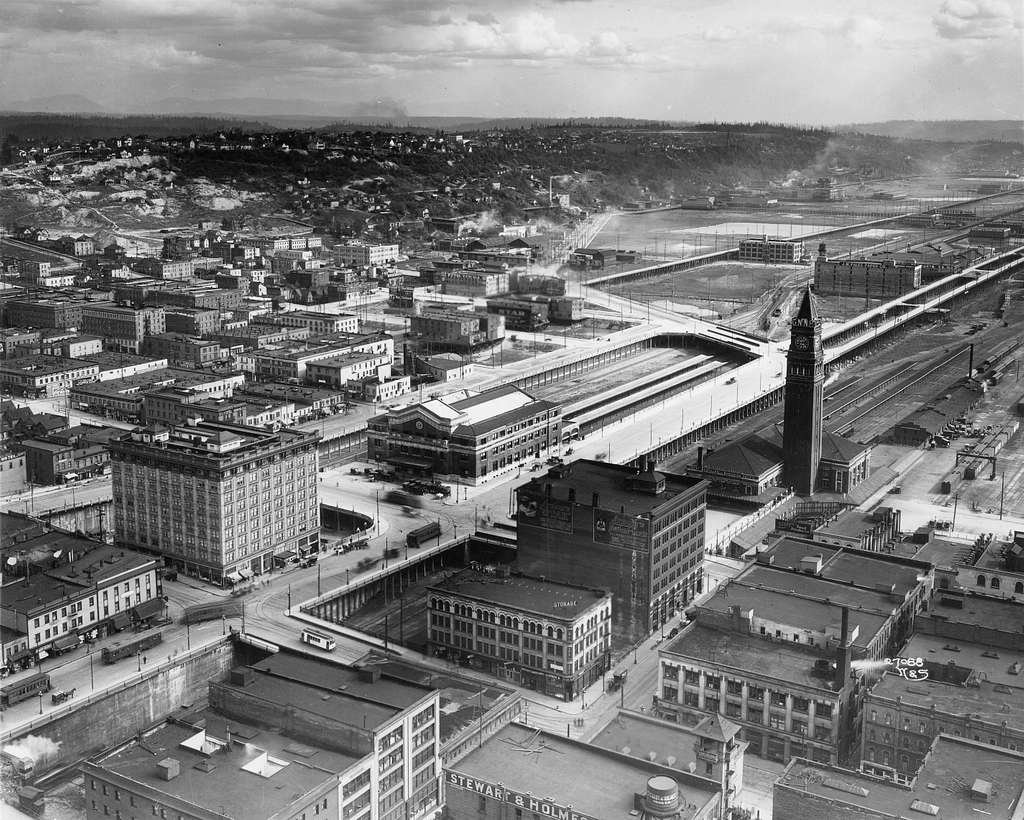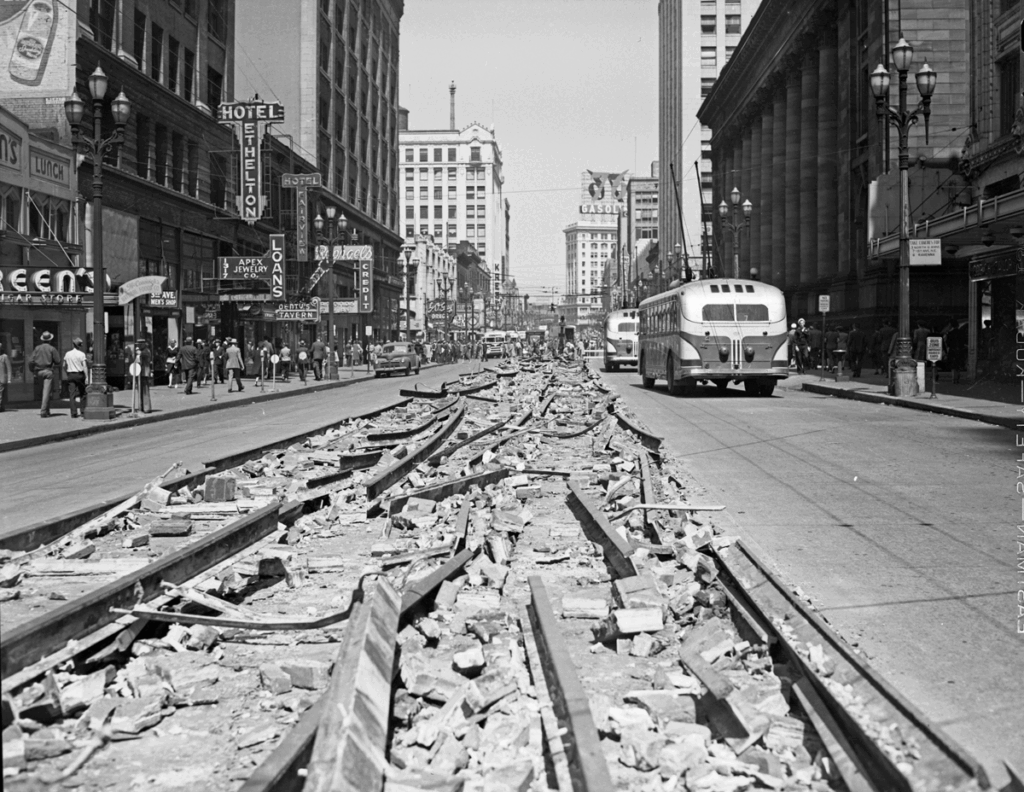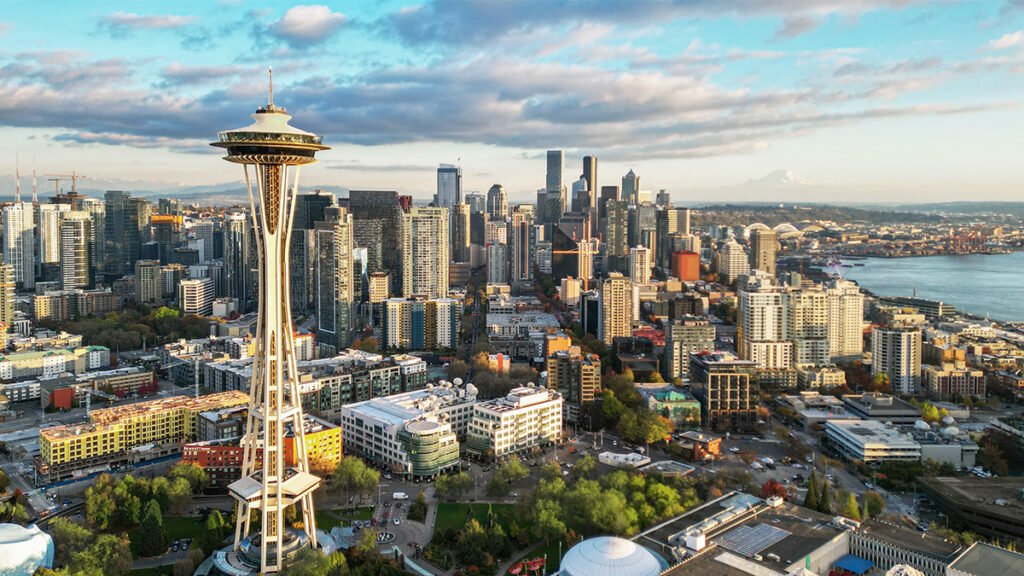Seattle Then and Now
Seattle Then
Seattle, located in the Pacific Northwest region of the United States, is a major urban and economic hub.
The city, founded in 1851 and named after the Duwamish Native American chief Seattle, is known for its scenic beauty, being surrounded by the Olympic Peninsula and Cascade Range.
Situated next to Puget Sound, Seattle is a vital port, serving as a gateway for trade between Asia, Alaska, and the rest of the U.S.
The city’s skyline is marked by impressive skyscrapers, offering stunning views of Elliott Bay.
Seattle is not only a commercial powerhouse but also a vibrant cultural center, with an abundance of parks, diverse neighborhoods, and a rich history.
Its growth has been shaped by both its natural environment and its strategic location as a trade and transportation hub.

Seattle History
The Puget Sound region, where Seattle is located, has a long history of human habitation, with evidence of Indigenous cultures living in the area for over 12,000 years.
By the time Europeans arrived, the region was home to many distinct Native American tribes, including the Suquamish, Duwamish, and Chinook peoples, who had a shared economy based on fishing, hunting, and gathering, with a gift-exchange system known as the potlatch.
When European explorers, such as Juan de Fuca, George Vancouver, and others, arrived in the late 18th century, they encountered these Indigenous groups, marking the beginning of European influence in the region.
Related Article: Dallas Then and Now
Vancouver’s 1792 expedition was key in mapping Puget Sound, and it led to increased interest from European powers, particularly Great Britain, in the area’s natural resources, including sea otter pelts.
The first non-Native settlers arrived in the Seattle area in 1851, establishing a small community in West Seattle.
They soon relocated to a more favorable site across Elliott Bay near a Duwamish village.
Related Article: Miami Then and Now
This new settlement, initially named after the Duwamish village, was later renamed Seattle in honor of Chief Seattle, who had been welcoming to the settlers.
In 1853, the city was officially laid out, and despite early challenges, including military conflicts with Native Americans, Seattle began to grow.
By 1861, the establishment of the University of Washington further solidified Seattle’s future as a key center in the region.
Related Article: Washington D.C. Then and Now

However, the city faced setbacks such as a devastating fire in 1889, which destroyed much of its business district, but it recovered quickly with the help of new infrastructure, including the arrival of railroads and the Klondike Gold Rush.
Seattle’s early economy revolved around logging, but it rapidly diversified with the development of shipping and trade, especially after the completion of the railroad.
The city became a major port, facilitating trade with Asia, and its population surged from a few thousand in the 1880s to over 80,000 by 1900.
Related Article: Boston Then and Now
The period was not without conflict, however, as the city experienced racial tensions, including anti-Chinese riots, and dealt with corruption associated with its “open-city” policy, which allowed saloons, brothels, and casinos to operate freely.
Social reforms in the early 20th century helped clean up the city’s government and introduced progressive policies, including women’s suffrage and labor rights.
World War II marked another transformative period for Seattle, as the city became a hub for wartime production, including ships, aircraft, and armaments.
Related Article: San Francisco Then and Now
The workforce grew, with many migrants coming to Seattle for work, and the city’s demographic makeup shifted.
In the postwar years, Seattle continued its expansion, with the completion of the World’s Fair in 1962 bringing global attention to the city.
The 1960s and 1970s saw both urban renewal and criticism of rapid development, leading to policies aimed at preserving the city’s historic character.
Related Article: Panama City Then and Now
By the late 20th century, Seattle had firmly established itself as a center of innovation, particularly in high technology and internet commerce.
The tech boom, led by companies like Microsoft and Amazon, transformed the city into a global economic powerhouse.
However, the city’s rapid growth also brought challenges, such as traffic congestion and environmental concerns.
Related Article: Quito Then and Now
In the 21st century, Seattle maintained its reputation as a livable city with a strong economy, active political engagement, and a commitment to sustainability.
The city’s diverse population and progressive values continue to shape its identity as a thriving, international metropolis.
Related Article: Santiago Then and Now
Seattle Now

Seattle, a bustling seaport city located on the West Coast of the United States, holds a significant place in both the state of Washington and the Pacific Northwest.
As of 2023, it has a population of over 755,000 people, making it the largest city in Washington and the Pacific Northwest.
This positions Seattle as the 18th-largest city in the United States, a testament to its vibrant economy and growth.
Related Article: Bogota Then and Now
The Seattle metropolitan area is home to over 4 million people, making it the 15th-largest metro area in the country.
Between 2010 and 2020, Seattle’s population grew by 21.1%, one of the highest growth rates for large cities in the U.S., reflecting its increasing importance and desirability.
Geographically, Seattle is uniquely situated on an isthmus between Puget Sound and Lake Washington.
Related Article: Lima Then and Now
Its location offers easy access to the Pacific Ocean, making it a key gateway for trade, especially with East Asia.
As of 2021, the Port of Seattle ranks as the fourth-largest port in North America by container handling, underscoring the city’s role in global trade and commerce.
This prime location has helped establish Seattle as a major economic hub, not only on the West Coast but internationally.
Related Article: Buenos Aires Then and Now
The city’s economic importance is further bolstered by its robust connections to global distribution networks, including road, rail, air, and sea transport systems that link Seattle to a vast hinterland.
This region extends all the way east to Montana and the Great Plains, ensuring Seattle’s integration into the broader economic framework of the United States and beyond.
In recent decades, Seattle has become a global center for high technology and Internet-based commerce, housing some of the world’s leading companies in these fields, such as Amazon and Microsoft.
Related Article: Rio de Janeiro Then and Now
This shift towards technology and innovation has significantly influenced the city’s economic landscape, fueling its growth and reinforcing its status as a global city.
Seattle’s transformation from a small settlement in the mid-19th century to a modern metropolis is also reflected in its development trajectory.
Related Article: Sao Paulo Then and Now
Incorporated in 1869, the city’s early economy was built on industries such as logging and coal mining, but the arrival of the railroad and the growth of the maritime trade propelled it to greater economic heights.
Today, Seattle continues to thrive as a center of trade, technology, and commerce, while maintaining a strong regional identity within the U.S.
Related Article: Mexico City Then and Now
FAQs
Seattle is in the state of Washington, located on the West Coast of the United States.
Yes, Seattle is considered a costly place to live. Housing prices, rent, and the cost of living are relatively high, especially in comparison to the national average.
Seattle is famous for being a major tech hub, home to companies like Amazon and Microsoft.
It is also known for its iconic landmarks such as the Space Needle, its vibrant music scene, and as a gateway for trade with East Asia.
Yes, Seattle is considered a good place for immigrants. It has a diverse population, welcoming communities, and opportunities in the tech, healthcare, and trade sectors. The city also offers various support services for newcomers.






























